Mount Kilimanjaro is home to a number of endemic plant species that are found nowhere else on Earth but on this mountain located in Tanzania, East Africa.
Kilimanjaro, the highest mountain in Africa, is renowned for its stunning vistas and diverse ecosystems. While most people know about the mountain’s wildlife and dramatic landscapes, fewer are aware of the incredible diversity of plant life that calls Kilimanjaro home.
Have you ever wondered what kind of plant life thrives on the slopes of Kilimanjaro, Africa’s tallest mountain? The endemic plants of Kilimanjaro are a fascinating subject for botanists, hikers, and nature enthusiasts alike. These plants are unique to the mountain and can only be found in this specific region, making them a rare and treasured sight for those who get the chance to see them.
What are endemic plants?
Before we dive into the unique flora of Kilimanjaro, it’s important to define what we mean by “endemic plants.” Endemic species are those that are found in a particular geographic area and nowhere else on the planet. In other words, they have a restricted distribution and are unique to a specific region or ecosystem. Endemic species are often vulnerable to extinction, as they are more susceptible to changes in their environment and may have limited genetic diversity.
In this article, we’ll explore the endemic plants of Kilimanjaro and take a closer look at their features, growth patterns, and significance. We’ll also answer some of the most commonly asked questions about these plants and share some tips on how to spot them while hiking on the mountain.
Impatiens kilimanjari:
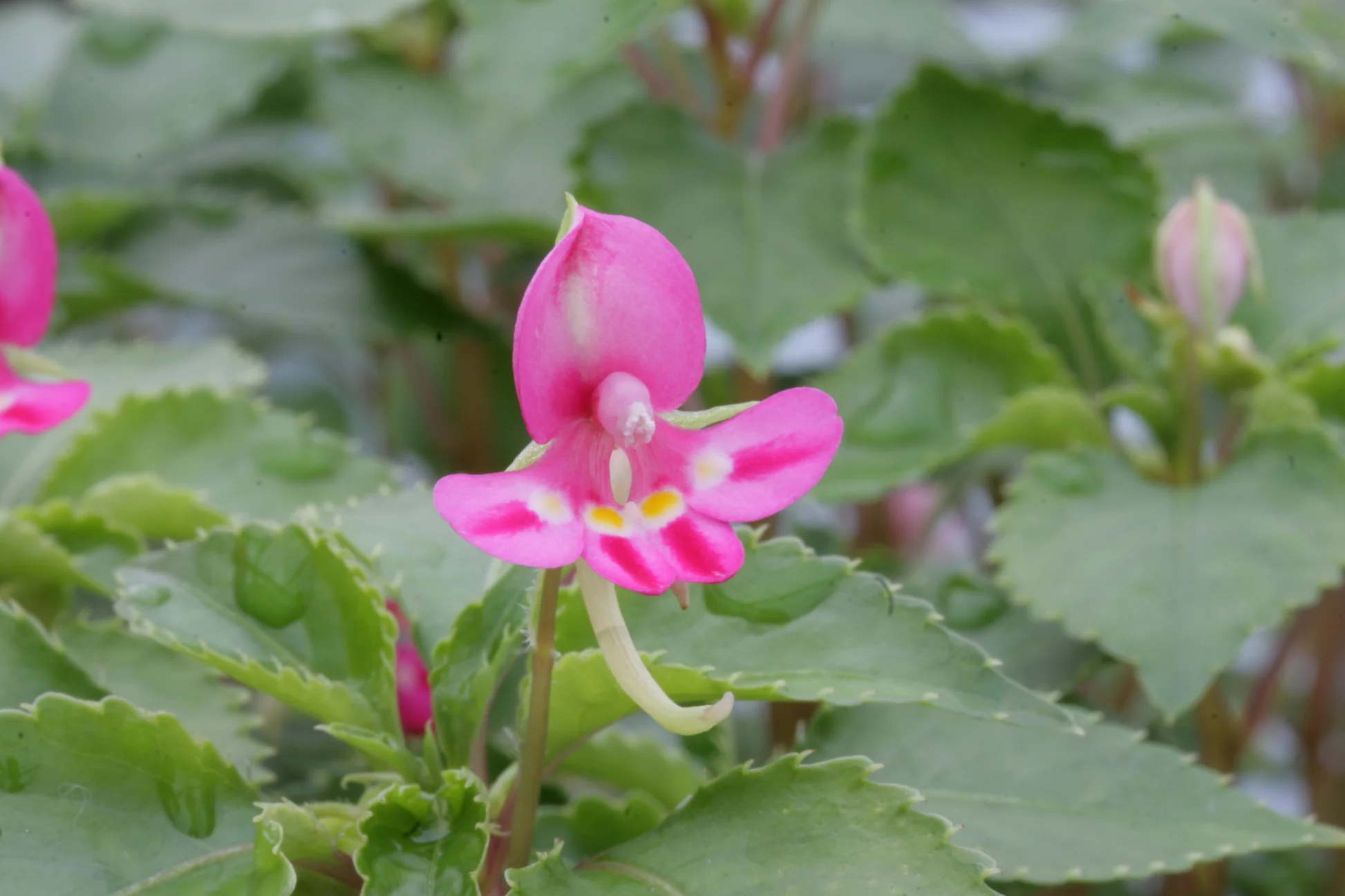
This plant is a member of the balsam family and is found in the rainforests of Kilimanjaro. It is a small plant with bright red flowers. Impatiens kilimanjari is a beautiful plant that is found only in the rainforests of Kilimanjaro. It is a small plant with bright red flowers that are held in clusters. The plant is found in the understory of the rainforest and is often found growing in moist, shady areas. Impatiens kilimanjari is a popular plant for cultivation and is often grown in gardens and greenhouses.
Viola eminii:
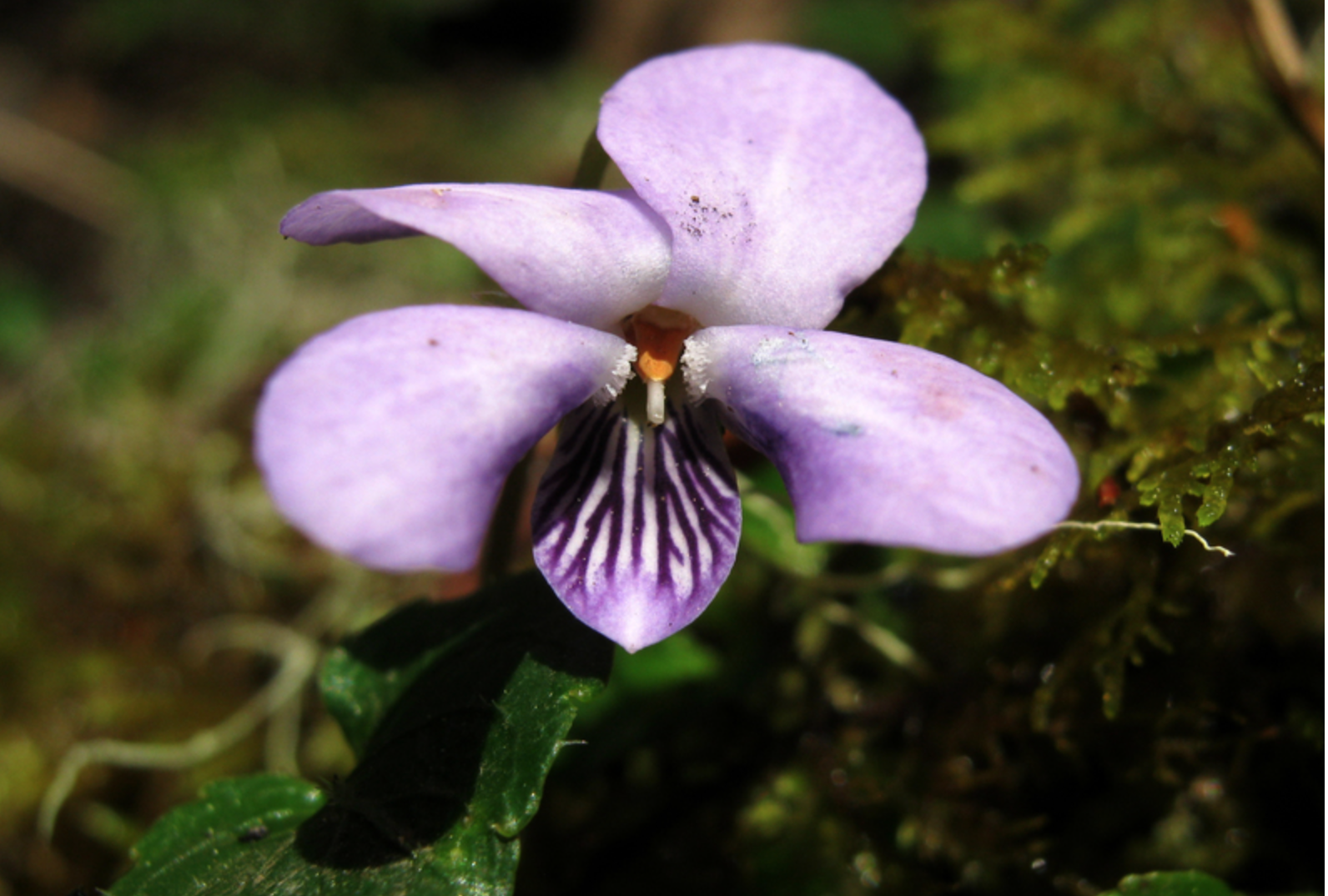 This plant is a member of the violet family and is found in the rainforests of Kilimanjaro. It is a small plant with purple flowers. Viola eminii is a small, delicate plant that is found only in the rainforests of Kilimanjaro. It has purple flowers that are held in clusters. The plant is found in the understory of the rainforest and is often found growing in moist, shady areas. Viola eminii is a popular plant for cultivation and is often grown in gardens and greenhouses.
This plant is a member of the violet family and is found in the rainforests of Kilimanjaro. It is a small plant with purple flowers. Viola eminii is a small, delicate plant that is found only in the rainforests of Kilimanjaro. It has purple flowers that are held in clusters. The plant is found in the understory of the rainforest and is often found growing in moist, shady areas. Viola eminii is a popular plant for cultivation and is often grown in gardens and greenhouses.
Stoebe kilimandscharica:
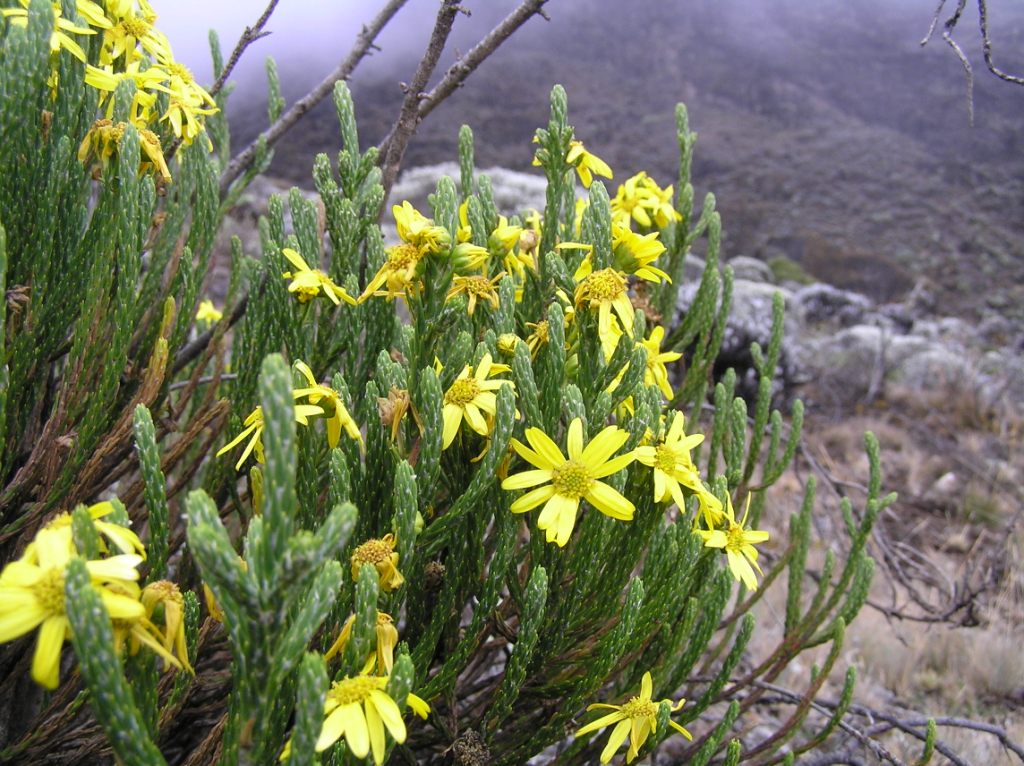
This plant is a member of the daisy family and is found in the heath and moorland zone of Kilimanjaro. It is a small shrub with yellow flowers. Stoebe kilimandscharica is a small shrub that is found only in the heath and moorland zone of Kilimanjaro. It has yellow flowers that are held in clusters. The plant is found in the open areas of the heath and moorland zone and is often found growing in rocky areas. Stoebe kilimandscharica is a popular plant for cultivation and is often grown in gardens and rockeries.
Hebenstretia dentata:
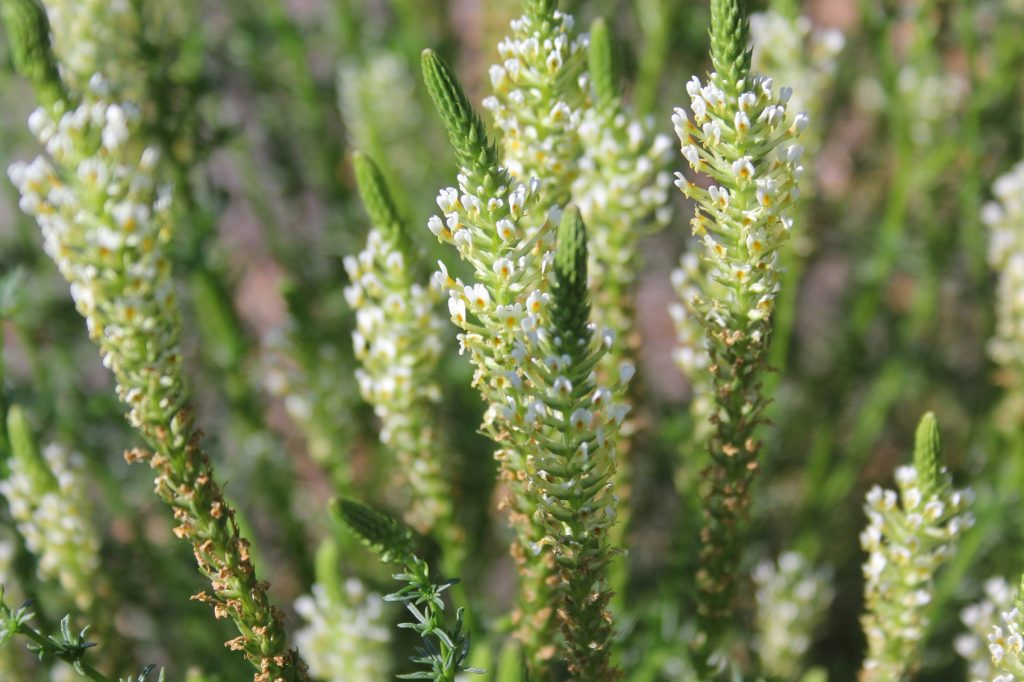 This plant is a member of the figwort family and is found in the heath and moorland zone of Kilimanjaro. It is a small shrub with purple flowers. Hebenstretia dentata is a small shrub that is found only in the heath and moorland zone of Kilimanjaro. It has purple flowers that are held in clusters. The plant is found in the open areas of the heath and moorland zone and is often found growing in rocky areas. Hebenstretia dentata is a popular plant for cultivation and is often grown in gardens and rockeries.
This plant is a member of the figwort family and is found in the heath and moorland zone of Kilimanjaro. It is a small shrub with purple flowers. Hebenstretia dentata is a small shrub that is found only in the heath and moorland zone of Kilimanjaro. It has purple flowers that are held in clusters. The plant is found in the open areas of the heath and moorland zone and is often found growing in rocky areas. Hebenstretia dentata is a popular plant for cultivation and is often grown in gardens and rockeries.
Kniphofia thomsonii:
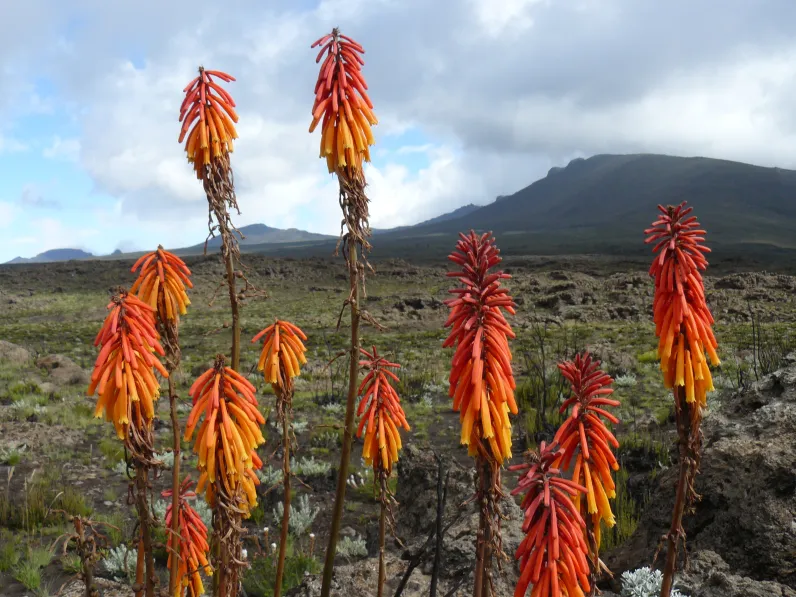
This plant is a member of the asparagus family and is found in the heath and moorland zone of Kilimanjaro. It is a tall plant with red flowers. Kniphofia thomsonii is a tall plant that is found only in the heath and moorland zone of Kilimanjaro. It has red flowers that are held in spikes. The plant is found in the open areas of the heath and moorland zone and is often found growing in rocky areas. Kniphofia thomsonii is a popular plant for cultivation and is often grown in gardens and rockeries.
Lobelia deckenii:
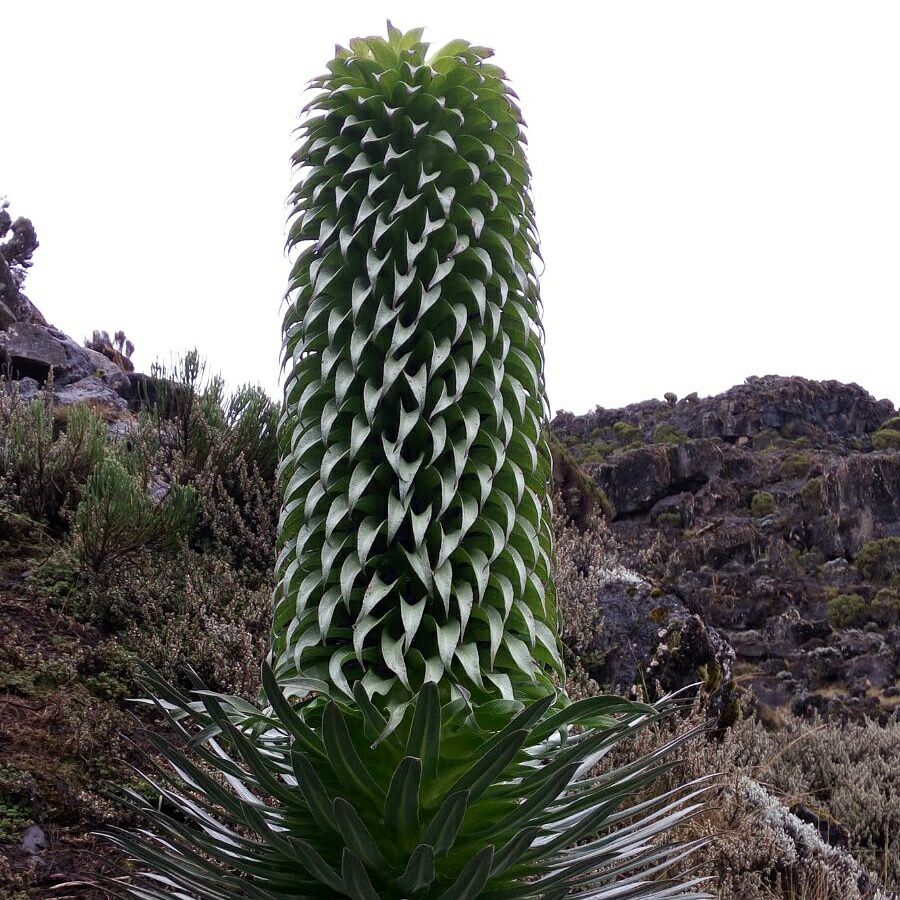 This plant is a member of the bellflower family and is found in the heath and moorland zone of Kilimanjaro. It is a tall plant with blue flowers.
This plant is a member of the bellflower family and is found in the heath and moorland zone of Kilimanjaro. It is a tall plant with blue flowers.
Dendrosenecio kilimanjari:
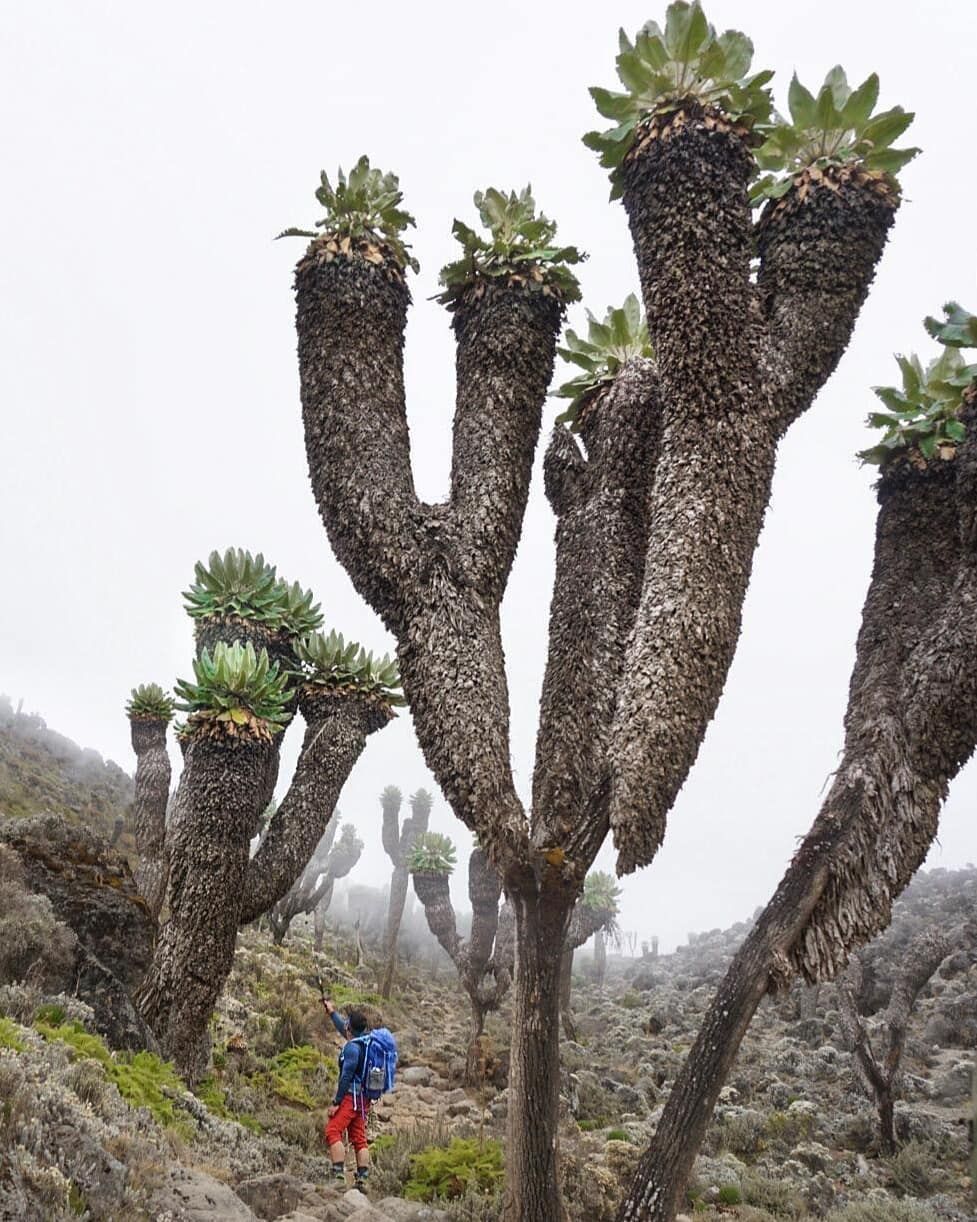
This plant is a member of the sunflower family and is found in the alpine desert zone of Kilimanjaro. It is a giant groundsel that can grow up to 12 meters tall.
Protea kilimandscharica:
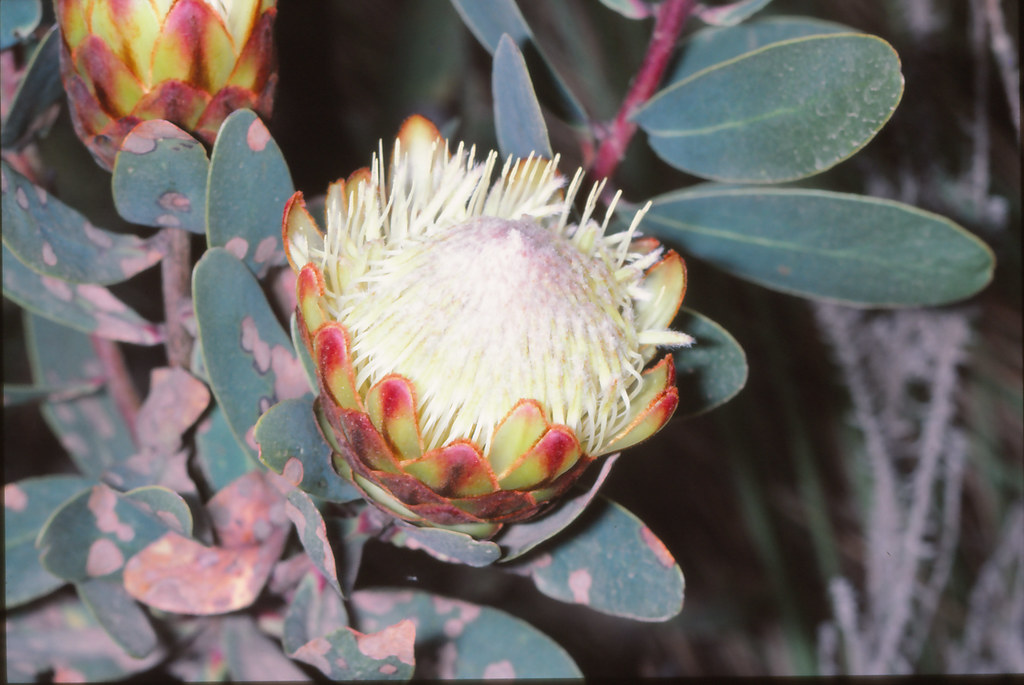 This plant is a member of the protea family and is found in the heath and moorland zone of Kilimanjaro. It is a shrub with large, showy flowers.
This plant is a member of the protea family and is found in the heath and moorland zone of Kilimanjaro. It is a shrub with large, showy flowers.
Erica arborea:
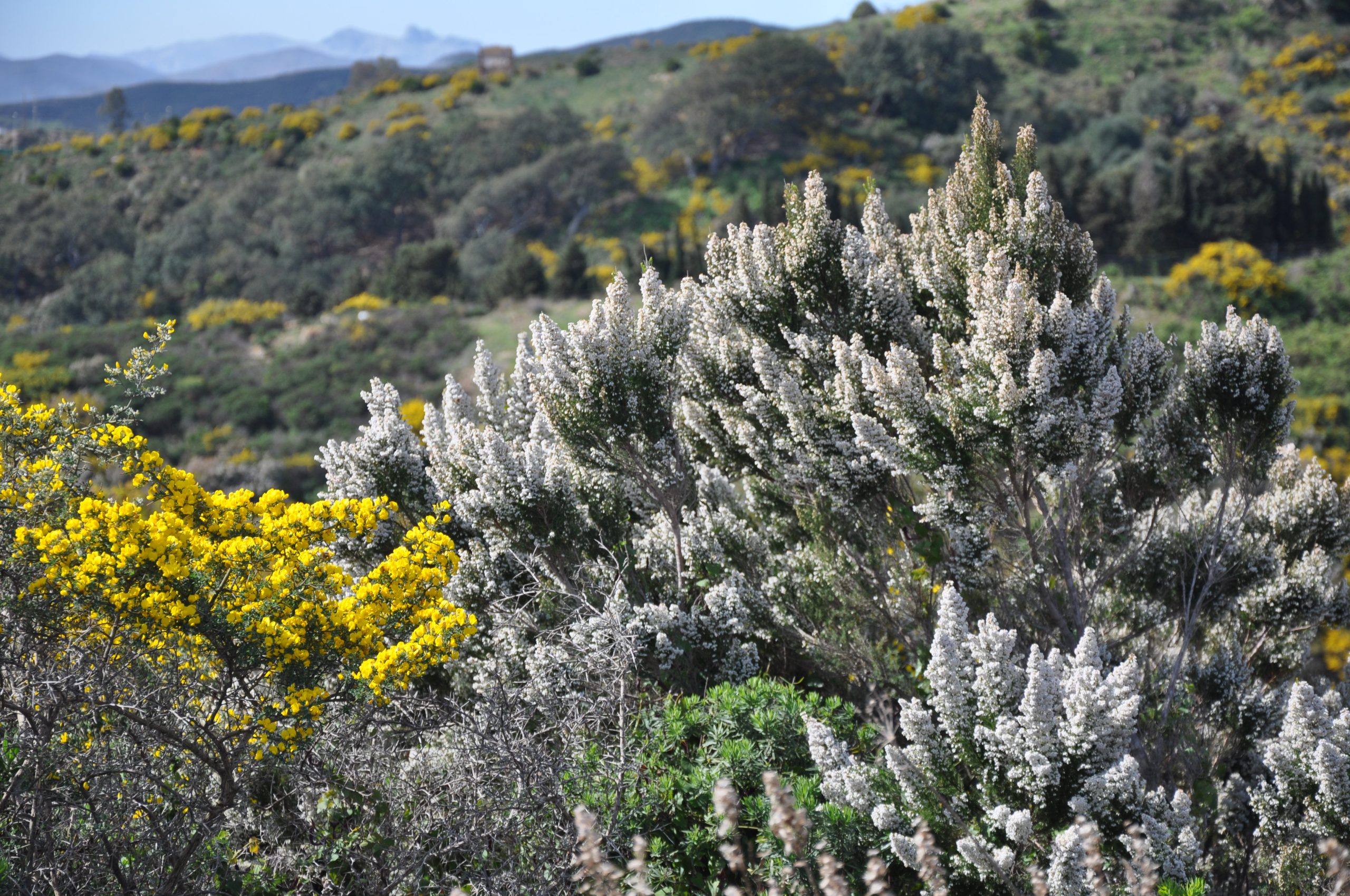 This plant is a member of the heath family and is found in the heath and moorland zone of Kilimanjaro. It is a small tree with white flowers.
This plant is a member of the heath family and is found in the heath and moorland zone of Kilimanjaro. It is a small tree with white flowers.
- Helichrysum newii:
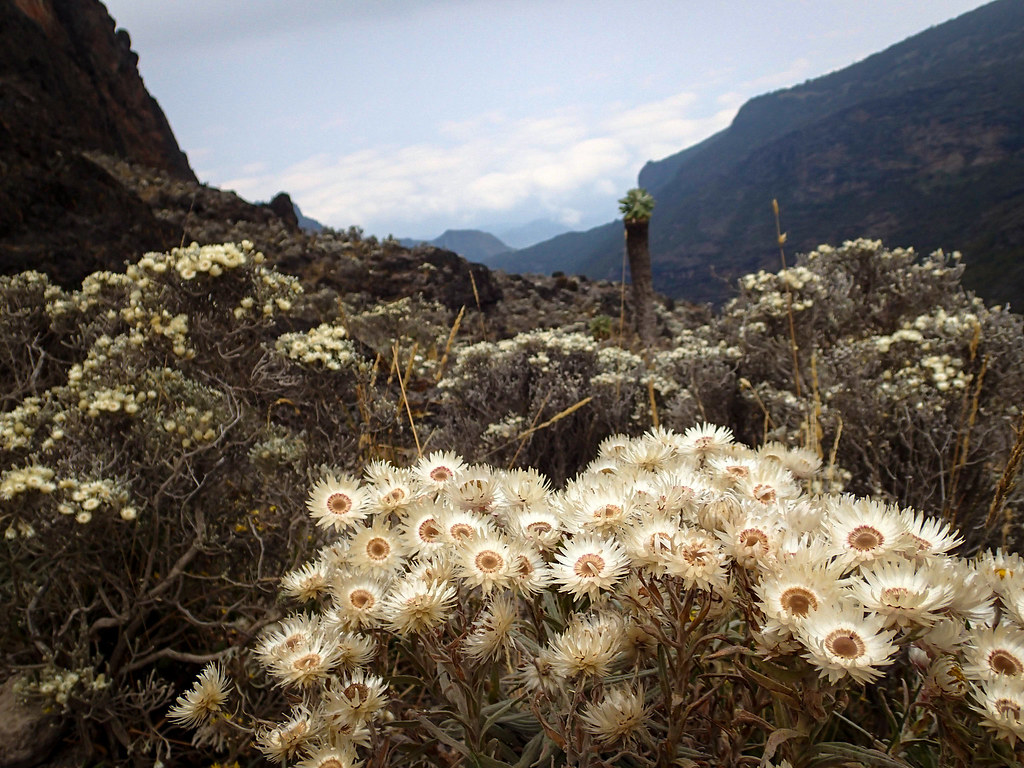 This plant is a member of the daisy family and is found in the alpine desert zone of Kilimanjaro. It is a small shrub with yellow flowers.
This plant is a member of the daisy family and is found in the alpine desert zone of Kilimanjaro. It is a small shrub with yellow flowers.
More Endemic Plants
- Ardisia stuhlmannii: This plant is a member of the myrtle family and is found in the rainforests of Kilimanjaro. It is a small shrub with white flowers.
- Begonia kilimandscharica: This plant is a member of the begonia family and is found in the rainforests of Kilimanjaro. It is a small plant with pink flowers.
- Crassula dependens: This plant is a member of the stonecrop family and is found in the heath and moorland zone of Kilimanjaro. It is a small succulent plant with green leaves.
- Erica pallida: This plant is a member of the heath family and is found in the heath and moorland zone of Kilimanjaro. It is a small shrub with white flowers.
- Lobelia keniensis: This plant is a member of the bellflower family and is found in the heath and moorland zone of Kilimanjaro. It is a tall plant with blue flowers.
- Adenocarpus kilimandscharicus: This plant is a member of the pea family and is found in the heath and moorland zone of Kilimanjaro. It is a small shrub with yellow flowers.
- Androstachys kilimandscharica: This plant is a member of the ginger family and is found in the rainforests of Kilimanjaro. It is a small tree with white flowers.
- Buddleja stuhlmannii: This plant is a member of the trumpet vine family and is found in the rainforests of Kilimanjaro. It is a small shrub with purple flowers.
- Canthium kilimandscharicum: This plant is a member of the coffee family and is found in the rainforests of Kilimanjaro. It is a small tree with white flowers.
- Cassipourea kirkii: This plant is a member of the laurel family and is found in the rainforests of Kilimanjaro. It is a small tree with white flowers.
- Croton kilimandscharicus: This plant is a member of the spurge family and is found in the rainforests of Kilimanjaro. It is a small tree with yellow flowers.
- Eugenia kilimandscharica: This plant is a member of the myrtle family and is found in the rainforests of Kilimanjaro. It is a small tree with white flowers.
- Ficus thonningii: This plant is a member of the fig family and is found in the rainforests of Kilimanjaro. It is a small tree with white flowers.
- Hypericum revolutum: This plant is a member of the St. John’s wort family and is found in the rainforests of Kilimanjaro. It is a small shrub with yellow flowers.
- Indigofera kilimandscharica: This plant is a member of the pea family and is found in the heath and moorland zone of Kilimanjaro. It is a small shrub with purple flowers.
- Lippia javanica: This plant is a member of the mint family and is found in the rainforests of Kilimanjaro. It is a small shrub with white flowers.
- Lobelia wollastonii: This plant is a member of the bellflower family and is found in the heath and moorland zone of Kilimanjaro. It is a tall plant with blue flowers.
- Maesa kilimandscharica: This plant is a member of the medlar family and is found in the rainforests of Kilimanjaro. It is a small tree with white flowers.
- Myrsine kilimandscharica: This plant is a member of the myrtle family and is found in the rainforests of Kilimanjaro. It is a small tree with white flowers.
- Oreopanax mossambicensis: This plant is a member of the ivy family and is found in the rainforests of Kilimanjaro. It is a small tree with white flowers.
- Pachypodium geayi: This plant is a member of the milkweed family and is found in the rainforests of Kilimanjaro. It is a small tree with thick, fleshy leaves.
- Rhamnus prinoides: This plant is a member of the buckthorn family and is found in the rainforests of Kilimanjaro. It is a small tree with white flowers.
- Rothmannia globosa: This plant is a member of the coffee family and is found in the rainforests of Kilimanjaro. It is a small tree with white flowers.
- Solanum incanum: This plant is a member of the nightshade family and is found in the rainforests of Kilimanjaro. It is a small shrub with white flowers.
- Strelitzia nicolai: This plant is a member of the banana family and is found in the rainforests of Kilimanjaro. It is a small tree with white flowers.
These are just a few of the many endemic plants that can be found on Kilimanjaro. The mountain is a treasure trove of biodiversity, and it is a great place to see some of the most amazing plants in the world.
The Beauty of Kilimanjaro’s Endemic Plants
One of the most striking features of Kilimanjaro’s endemic plants is their ability to adapt to the harsh and ever-changing environment of the mountain. From lush tropical forests to rocky alpine zones, these plants have evolved to survive in a range of conditions, each with their own unique beauty.
The Forest Zone
The forest zone of Kilimanjaro is home to a variety of endemic plant species, including:
- The Kilimanjaro Tree Fern: This large, slow-growing fern can grow up to 10 meters tall and is found in the humid forest zone of the mountain. It has a distinctive brown trunk covered in fine scales and fronds that can be up to 4 meters long.
- The Kilimanjaro Impatiens: This beautiful flowering plant has bright pink or purple blooms and can be found in the undergrowth of the mountain’s forests. It is a popular ornamental plant in many parts of the world.
- The Kilimanjaro Yellowwood: This large, evergreen tree can grow up to 30 meters tall and is found in the upper reaches of the mountain’s forest zone. It has a distinctive yellowish bark and is an important source of timber in the region.
The Heath Zone
The heath zone of Kilimanjaro is characterized by its rocky, volcanic terrain and sparse vegetation. Some of the endemic plant species found in this zone include:
- The Kilimanjaro Giant Groundsel: This unique plant can grow up to 5 meters tall and is found in the upper reaches of the heath zone. It has large, fleshy leaves and a cluster of yellow flowers at the top.
- The Kilimanjaro Lobelia: This impressive plant can grow up to 10 meters tall and is found in the alpine heath zone of the mountain. It has a thick stem covered in silver hairs and produces large, trumpet-shaped flowers.
- The Kilimanjaro Helichrysum: This small, yellow-flowered plant is found in the rocky areas of the heath zone. It has a distinctive resinous scent and is often used in traditional medicine in the region.
Endemic Plants of Kilimanjaro: FAQs
- What are the endemic plants of Kilimanjaro? Endemic plants are those that are unique to a specific region or area and cannot be found anywhere else in the world. The endemic plants of Kilimanjaro are those that are only found on the mountain and nowhere else.
- How many endemic plant species are found on Kilimanjaro? There are over 1,000 plant species on Kilimanjaro, of which around 250 are endemic to the mountain.
- Why are endemic plants important? Endemic plants are important for biodiversity and conservation efforts, as they play a crucial role in the ecosystem and provide unique benefits such as medicinal properties or food sources for wildlife.
- Can I see the endemic plants of Kilimanjaro while hiking? Yes, many endemic plant species can be spotted while hiking on Kilimanjaro. However, it’s important to be mindful of the fragile ecosystem and not disturb the plants while exploring.
- Are endemic plants of Kilimanjaro threatened? Yes, many endemic plant species on Kilimanjaro are threatened due to habitat loss, climate change, and other human activities. Conservation efforts are crucial to protect these plants and ensure their survival for future generations.
- How can I learn more about the endemic plants of Kilimanjaro? There are many resources available online and in books about the endemic plants of Kilimanjaro, as well as guided tours and hikes that focus on the flora and fauna of the mountain.
Protecting The Unique Plants on Mount Kilimanjaro
The endemic plants of Kilimanjaro are a unique and fascinating and vital aspect of the mountain’s ecosystem and should be protected for future generations. From towering trees to tiny flowering plants, these species have adapted to survive in a range of environments and play an important role in the region’s biodiversity. By learning more about these plants and supporting conservation efforts, we can help ensure that they continue to thrive for generations to come.
Remember, when hiking on Kilimanjaro, always respect the fragile ecosystem and do your part to minimize your impact on the environment. By doing so, you’ll be able to fully appreciate the beauty and uniqueness of the endemic plants of Kilimanjaro.
![]()

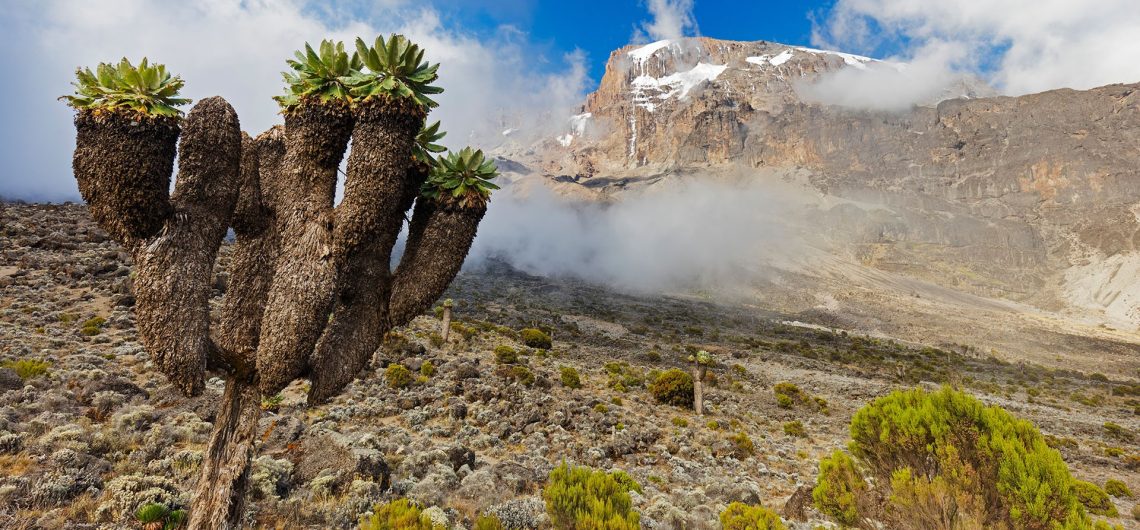
Comments